A Modernist’s legacy in the Waikato: Henry Kulka
A local landmark, the Meteor Theatre on the corner of Anzac Parade and Victoria Street in Hamilton was originally a soft drink factory. When it opened in 19561, the Innes Factory was one of a trio of large commercial buildings built in Hamilton and designed by one of New Zealand’s foremost modernist architects.
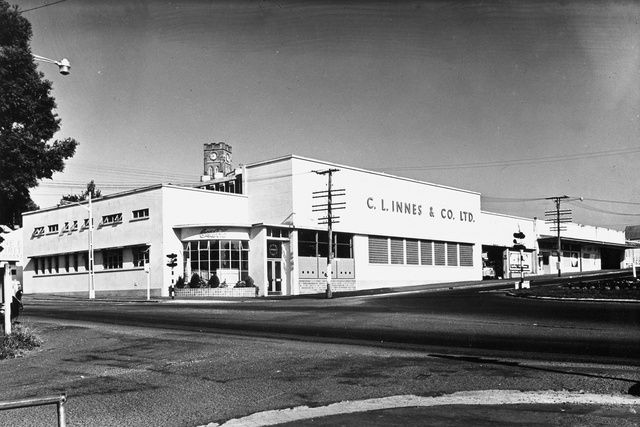
The Innes Factory was designed by Henry Kulka (1900–1971) a Czech-New Zealand architect who began his studies of architecture at the Technical University of Vienna. Finding the lessons uninspiring, he deferred completing his degree and in 1919 attended the Vienna-based ‘Bauschule’2 run by the pioneering modern architect Adolf Loos. There he was awarded first prize in the spatial design competition which Loos set his students. Soon afterwards Kulka became a full-time assistant to Loos, and by 1927 Kulka was heading Loos’ practice in Paris. While there he worked on the unrealised yet iconic ‘Maison Baker’ for the legendary Folies Bergère cabaret star Josephine Baker3.
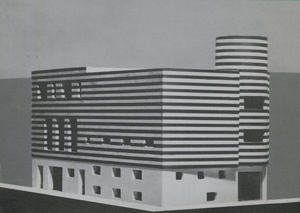
Kulka formed a formal architectural partnership with Loos in Vienna from 1927 until 1932. Adolf Loos described Kulka as “the guardian of my ideas”4 and, when Loos died in 1933, Kulka continued their architectural practice between offices in Vienna, Austria, and Hradec Kralove in Czechoslovakia. Upon the Nazi’s occupation (Anschluss) of Austria in 1938, Kulka fled to Czechoslovakia, and from there to England in 1939, before emigrating permanently to New Zealand in 1940. He arrived in Wellington after his wife and two children who joined him having escaped separately from Nazi-occupied Czechoslovakia. Kulka had obtained New Zealand immigration visas through the intervention of his friend Jan Masaryk, the Czechoslovakian Foreign Minister in exile based in London, who was in turn a friend of the London-based New Zealand High Commissioner Sir William Jordan.
Once in New Zealand, Kulka settled in Auckland becoming chief architect with the Fletcher Construction Company (FCC). Kulka would remain with FCC until 1960 whereupon he commenced a full-time private practice focusing on wooden residences and furniture from his home office in St. Heliers.
Kulka realised around thirty private residences throughout the North Island. Unfortunately, many have not survived, and numerous others have been significantly altered. The remaining few intact houses are precious examples of his craftsmanship in wood and space. It is estimated that around five fine wooden houses remain on the Northern slopes of Auckland’s Eastern suburbs. A handful are spread across the balance of the Auckland isthmus including Titirangi, and a couple remain in good condition in the Waikato. Three exist in good to reasonable condition in Wellington5.
Kulka’s output at FCC from 1940 to 1960 was prodigious, and many commercial buildings were constructed in the Waikato. Not all FCC buildings were designed by Kulka, however. The five-storey National Insurance Building (1955)6 on the corner of Caro and Alexander Streets is not, neither is the Mutual Life Building (1957)7 on the corner of Garden Place and Alexander Street. However, as recently as ten years ago three Kulka-designed commercial buildings were still standing in Hamilton. Today just one remains.
Once such commercial building was designed for Dalgety and Co Ltd, which opened in December 1955. It was a large single-story building on the corner Victoria and Rostrevor Streets, where Fastlane Fitness is today. Constructed of reinforced tilt-up concrete walls and with a pre-stressed concrete roof, the building had no internal columns. The interior, free of pillars, provided an unobstructed view of most of the main office area which was finished in a ‘pleasing range of colours’8. The colour effects would have come from the extensive use of plywood finishes of which Kulka was known for; once evident in the now demolished Fletcher Plywood building (1941), as well as many of his residential interiors such as the Strauss House (1959) in Auckland9. The Dalgety building was innovative for being a very early example of both tilt-up construction and pre-stressed concrete construction in New Zealand.
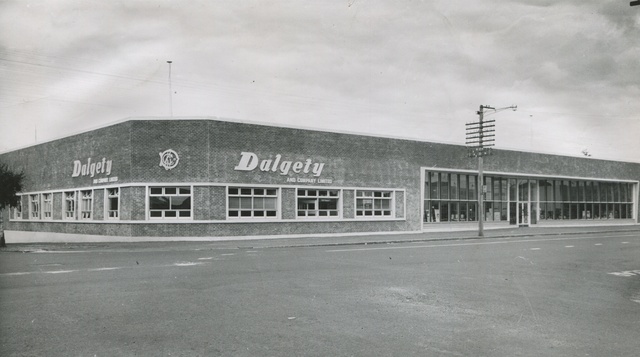
Kulka also designed a two-story reinforced concrete building for the Auckland Herd Improvement Association in London Street. Officially opened in June 1956, this building had an unadorned flat façade with a full-width bank of glass windows on the first floor, with projecting concrete hood above. The first-floor fenestration (window openings) was arranged symmetrically, but on the ground floor, the fenestrations are larger and arranged asymmetrically. The main entrance was to the left of two larger banks of windows. The play between symmetry and asymmetry is a feature of Kulka’s work where windows would be placed only where light was needed. Like Loos, Kulka avoided decorative structuralism and façadism. Unfortunately, this building was demolished sometime between 2021–2022.
The surviving commercial building Kulka designed while at FCC is known today at The Meteor Theatre. Despite some unsympathetic interventions, the Innes Factory, which turns 70 next year, is in remarkably good condition. The building is looked after by a team of dedicated and capable custodians.
A search through the building’s Property Title reveals a snapshot of early Hamilton City. An 1864 survey map of Hamilton West allocated the corner site to ‘The District of Waikato Hospital and Charitable Aid Board’. The first Certificate of Title was registered to the same organisation in 1894, and from 1825 to the 1930s the land was leased dozens of times, suggesting some possible horse-trading amongst Hamilton businessmen. Eventually, in 1947, the land was leased to CL Innes and Co. Ltd for 21 years. Next came a lease to Innes Tartan Ltd in 1969, later changing to Innes Schweppes Ltd in 1973. After that, the building was owned by several private individuals and companies.
One of the stronger connections the building has had to the community of Hamilton is from its life as a roller-skating rink. For most of the 1970s and 1980s the building was known simply as Skateworld which Kulka’s own grandchildren attended regularly as teenagers. An existing covered and enormous concrete factory floor found new life as a surface for roller skates. It was the building’s success as a lively, music-filled arena which likely ensured its survival through two very tough decades for heritage buildings across New Zealand. Despite some commercial success, the building’s future was not guaranteed.
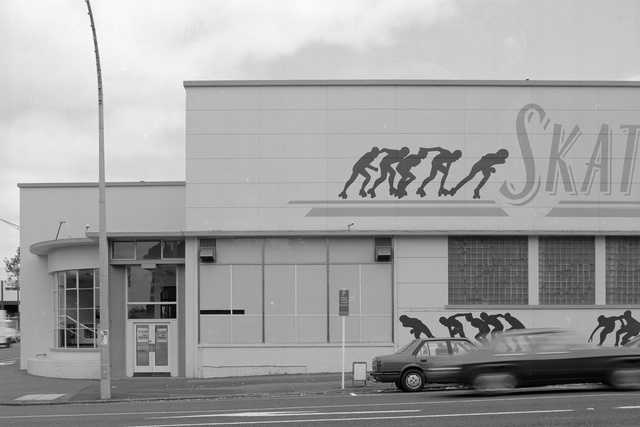
Hamilton City Council (HCC) purchased the property in 1996 but by 2012 the building’s ability to generate income (and comply with current building code requirements) was lacking. The building was soon identified as a potential ‘asset sale’. To save the building from potential demolition, and maintain its function as a working theatre, One Victoria Trust was established to take ownership and management of the building. HCC gifted the building in 2014 to the Trust under certain conditions, the primary one being to carry out seismic strengthening. This was completed in 2016.
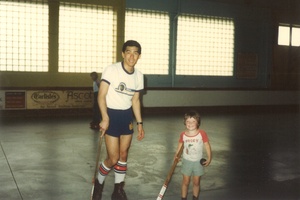
A list of design office jobs record that Kulka had worked on this project as far back as 194410. Locally, the building has been mistakenly attributed to Hamilton architects White, Leigh, and de Lisle, as some architectural documentation bear the firm’s names. Most likely the Hamilton firm carried out working drawings based on Kulka’s design and could possibly have made some modifications at either Kulka’s or the client’s request. Early Kulka drawings in the Kulka Estate Archives demonstrate that the façade, fenestration, and entrance do not differ greatly (if at all) from Kulka’s original pencil drawings. Other concept drawings from Kulka Family Archives demonstrate that a range of daring options were conceived by Kulka for the Innes Factory and that the project extended over some years. The extent of implemented interior changes by White et al may be confirmed in future when additional archival records become available.
Two aspects of Adolf Loos’ approach to building design that we see in Kulka’s work are evident in the Innes Factory. Loos was generally opposed to unnecessary ornamentation in architecture11. Like Loos, Kulka’s designs are characterised by flat façades, with an economy of materiality and an emphasis on functionality. Ornamentation, whether structural or decorative, is absent. Instead, the emphasis is on the harmonious proportions of windows and entrances that puncture the façade relative to the overall envelope. The Innes building’s simple façade also aligns with the post-war mood of civic modesty and utility.

Kulka helped assemble and edit Loos’ first book Spoken into the Void12 (1921), in which the famous Ornament and Crime13 essay became widely read. In the introduction to his book Loos acknowledges Kulka as a “loyal student”, and credits him as having helped with the assembly of the first edition in 192014. The essay continues to influence designers today, through its criticism of material waste, facile architectural ornamentation, and the pretence of decorative façadism.
Typical of Kulka’s thoughtful placement of windows, the Innes Factory has symmetrical fenestrations at the front and public space, but asymmetrical fenestrations to the private, functional spaces along Anzac Parade. The windows along Victoria Street are the same distance apart but flanked on each side by large, oversized windows15 (one altered to accommodate a second entrance). The Anzac Parade side of the building has a single row of fenestration per level, all rationally and practically positioned along a strong horizontal line, but in seemingly random groups of various widths. The Loosian design pedigree here is obvious, and echoes Loos’ Villas Rufer in Vienna (1922), Villa Moller in Vienna (1927), Maison Baker (1927) in Paris and in the Villa Müller in Prague (1929). Kulka assisted Loos on all these projects.
Another aspect of Loos’ architectural spirit we see in Kulka’s work is the three dimensional approach to planning called ‘raumplan’ (coined by Kulka himself)16. Raumplan employs the modulation of volumes in individual and adjoining rooms and the connecting spaces between them. The function and importance of spaces are suggested by elevations in floor height, lowered ceilings, sometimes split walls, and built-in furniture systems. In Loos and Kulka’s work, inter-related spaces are connected with consideration towards ‘harmonious proportions’, a sensitivity for perspective in the interior, and the feeling of anticipation when entering and leaving spaces.’

With the Innes Factory, Kulka has taken advantage of the change in level at the corner of the site by positioning the entrance there. Originally, visitors entered the building below ground level through tall double doors and into a double-height vestibule. Visitors then ascended seven curved stairs, adjacent a curved glass wall (the bottom mullion at floor level above) and entered the Public Space, furnished with a built-in curved seat. The original vestibule at the entrance to the Innes Factory suggests Kulka’s use of raumplan-like approach to create spaces connected vertically where one space flows into another (space flowing into space). Unfortunately, the position of an accessible ramp has impaired this once impressive street entrance.
In order to create a level-entry threshold from the street to the ground floor, the whole of the lower level at the public entrance has been filled in. The original door has been raised by a full window-mullion height, which means the original etched-glass Innes sign above the door has had to be removed and replaced with a smaller pane of glass. The bottom third of the original concave fluted columns either side of the now squat door are submerged in concrete. Like Loos, Kulka was very deliberate about the use of columns and placed them to entrances where activities beyond were serious in nature. This street entrance led straight to the main offices and meeting rooms. By reducing the size of the columns, the building’s sense of ceremony is reduced; a pity given the building’s current incarnation as a centre for performance. Also gone are the curved stairs (hopefully not permanently), though part of the original steel handrail remains.
A more sympathetic position for a new and accessible entrance for all could have been through the full-height fenestration, located between the original entrance and bank of glass-brick windows on Victoria Street. This would have allowed the entrance to remain untouched. It is not impossible to imagine that one day the entrance could be restored to its original vigour. Today the interior of the building remains largely original, including the mezzanine. This includes parts of the sloping concrete factory floor designed to contain spills, and the sawtooth roof which lets in abundant natural light. Modernised toilets and ground floor rooms do not match the footprint of the original layout, but there is more than enough of this building that has survived for it to be regarded as a significant and valuable heritage building. Its design by international modernist architect Henry Kulka, and through him, his mentor Adolf Loos, gives it architectural significance beyond the Waikato and New Zealand.
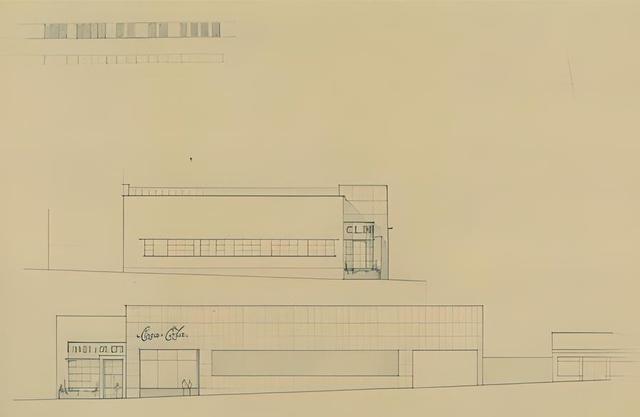
As a former roller-skating rink, the Innes Factory has provided young (and not so young) people enormous social value through decades worth of shared stories. As a working theatre since 1996, the building has provided a rich and abundant tapestry of experiences to patrons of all ages. The connection with Fletcher Construction Company is also important, as this building acknowledges a company that has had a significant impact on the City’s landscape. This is a true icon of a building, which in numerous ways has sewn itself into the history of Hamilton City and its people in positive ways for generations.
Notwithstanding the building’s prominence, its heritage status has largely flown under the radar. The Innes Factory is not listed with Heritage New Zealand, and only recently scheduled in the Hamilton City Council District Plan (the submission unfortunately failing to identify both the architect and builder). Internationally, recognition of Kulka’s work as a modern master of architecture is clearly cemented and rising.
In Czechoslovakia, the Plzen City purchased Kulka’s Villa Semler raumplan (1933) for the purpose of restoring it to its original condition through a substantial investment. This structure has now been fully restored and made a tourist hotspot as a visitable architectural museum where the exhibit is the structure itself (tickets can be purchased for guided tours). A second Kulka designed raumplan house, lined in fine book matched wood veneers17 and showcasing Kulka’s furniture designs is now in the process of being restored by another Czech city council. The plan is for this structure to be a visitable experience in raumplan architecture. This momentum signals Kulka’s increasing international standing as a significant figure in twentieth century architectural modernism. It seems inevitable that international focus on Kulka’s European architectural legacy will extend to his remaining best New Zealand works.

References
1 Although a building permit was issued in November 1954, the building was not finished until early 1956. Fletcher Construction Company’s magazine Arrowhead shows the building under construction in its November 1955 issue, and recently completed in the May 1956 issue. Hamilton City Council Historic Building Records (microfiche): Building Permit # 7817. Date issued: 23.11.1954. Address: Victoria Bridge. Description: Aerated Water Factory. Value £44,000. Owner: CL Innes Co Ltd. Builder: Fletcher Construction Company Ltd.
2 Translated from German to ‘Construction School’. The school was run as a series of dynamic moving seminars held between various locations. These included lecture venues, cafes, places of significant architecture and the craft houses of glass, brick and furniture makers and other master craftsman.
3 Kulka Foundation, Kulka Professional Biography Resource, Auckland, 2024.
4 Henry Kulka, Adolf Loos: The work of the Architect. Anton Schroll Verlag, Wien, 1930.
5 Kulka Foundation records as of 2024.
6 At the time of its construction, this was the tallest building in Hamilton, Smith, Jack. No Job Too Hard, A History of Fletcher Construction, Volume 2: 1940-1965. (Steele Roberts Publishers, Wellington, 2014), p 144.
7 Designed by Messrs Mitchell and Mitchell and Partners, Wellington.
8 Fletcher Holdings Limited. Arrowhead. Vol 2 No 4, May 1956. (FHL, Auckland), p13.
9 Shaw, Peter. A History of New Zealand Architecture. (Hodder Moa Beckett, Auckland. 1997), pp 149-50.
10 Shaw, Peter. Pride of Place, A History of the Fletcher Construction Company. (Fletcher Construction Company Ltd, Auckland. 2009), p101.
11 Loos was no absolutist and conceded to regulations he encountered from time to time. On one occasion, when designing opposite a palace, he added window flower boxes to the opposite façade. Wise, Michael (4 December 2013). ‘Reassessing an Uproar in Architecture’. New York Times. New York. Retrieved 27 July 2016.
12 Loos, Adolf. In leere Gesproken 1897–1900, Editions Georges Cres et Spoken into the Void (1921).
13 In the essay, Loos links ornamentation to crime, arguing that it is a form of theft. Loos explored the idea that the progress of culture is associated with the deletion of ornament from everyday objects, and that it was therefore a crime to force craftsmen or builders to waste their time on ornamentation.
14 Loos, Adolf. Spoken into the Void, Collected Essays 1897–1900. Page 2. MIT Press, New York. 1982. Kulka also prepared the second 1930 Edition of ‘Spoken into the Void’ alongside a new Loos book titled Troztdem in collaboration with Kulka’s friend the publisher Ludwig Von Ficker of Brenner Verlag.
15 Kulka was more generous with the size of windows compared to Loos. Compare for example the size of fenestration in Loos’ Rufer House (1922), Vienna with Kulka’s Villa Kantor, Czech Republic (1934). Note also that Kulka was an early proponent, perhaps the earliest in New Zealand of the factory saw-tooth roof, evident in the Innes Factory.
16 Henry Kulka, Adolf Loos: The work of the Architect. Anton Schroll Verlag, Wien, 1930.
17 Kulka was recognised for pioneering the modern use of finely mitred plywood linings to walls, and for meticulously joined built-in furniture from New Zealand native timbers. Refer Richard Goldie’s unpublished thesis (Henry Kulka, Thesis (BArch)—University of Auckland, 1986) and the three Kulka houses profiled in Julia Gatley’s Long Live the Modern. Gatley, Julia (ed). Long Live the Modern, New Zealand’s New Architecture 1904–1984. (Auckland University Press, 2008).









